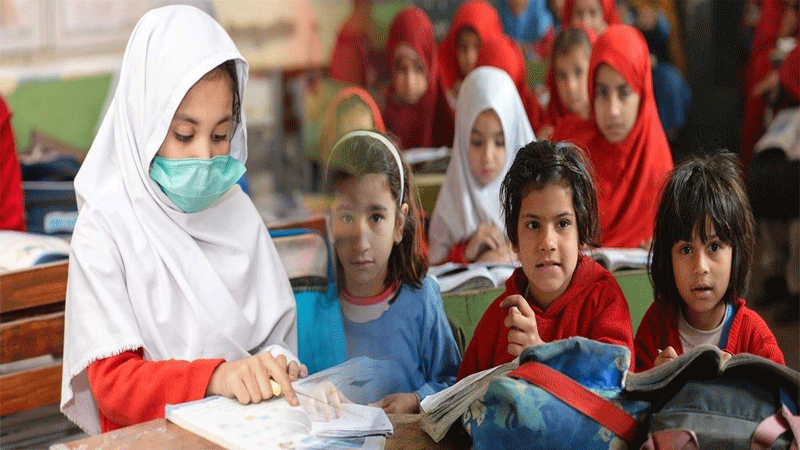“The HEC has asked universities to use best-practice techniques to produce graduates while keeping market demand in mind,” Dr. Mukhtar said.

High quality education is widely recognized as the most effective tool for developing a responsible society and a team of professionals capable of propelling any nation to new heights of research and development.
However, when this tool is used discriminatorily, it creates a clear divide between “the rulers and the ruled,” widening the gap between urban and rural communities as well as between the rich and the poor.
Because the best educational institutions tend to be located in metropolitan or mega-developed cities, the potential in rural or remote areas remains untapped.
Although rural institutes produce some outstanding students, their ratio is “too low” when compared to those in developed districts. Because the wealthy can afford expensive and high-quality education for their children, the brightest poor students fall behind in the race for higher education due to a lack of funds.
Like remote areas of Sindh, Balochistan, and KPK provinces, the situation is not different in South Punjab, where a few renowned universities fall short of meeting the growing need for higher education in the region.
South Punjab has a population of 34.7 million people living in its three divisions of Multan, Bahawalpur, and DG Khan. Currently, nine public and two private sector universities educate only 132,461 and 7,463 students, respectively, while thousands more prefer to study at well-known universities in Lahore and Islamabad due to varying educational quality.
“Bettering education standards is a continuous process, and we are doing everything we can to bring our major universities up to international standards,” said Dr. Mukhtar Ahmed, Chairman of the Higher Education Commission (HEC).
“The HEC has asked universities to use best-practice techniques to produce graduates while keeping market demand in mind,” Dr. Mukhtar said. “We have scheduled 200,000 online courses with Microsoft and are on our way to establishing a regional center in South Punjab soon.”
Several HEC-funded projects are currently underway at Bahauddin Zakariya University (BZU) in Multan, Islamia University Bahawalpur (IUB), Khawaja Ghulam Fareed University of Engineering and Information Technology (KFUEIT) in Rahim Yar Khan, and Muhammad Nawaz Sharif University of Agriculture (MNSUA).
“The HEC ensures that National Academy of Higher Education (NAHE)-trained teachers and master trainers impart training on campuses in order to provide quality education,” Dr. Mukhtar stated.
He stated that as Nishtar Medical University (NMU), the only one in South Punjab, approaches the end of its third year, it will be regularly funded by the HEC.
As the journey of educating our youth continues, some educationists advocate for increased funding for the education sector in order to improve educational quality, as Pakistan stands too low on the international list of best universities.
“Some institutions in South Punjab provide excellent learning opportunities. However, these institutions frequently face funding challenges,” said Dr. Asmat Naz, ex-dean of the School of Social Sciences at Multan’s Women’s University of Multan (WUM).
“The construction of WUM in Multan ten years ago opened doors for girls’ education, particularly for those who were not interested in co-education.” “Funding is a serious issue, however,” she added.
She pleaded for more funding, more seats in girls’ hostels, and better transportation for female students coming from remote areas to pursue higher education.
Some critics of the rapid expansion of higher education institutions claim that quality has suffered as instructors with higher academic achievements generally refuse to relocate to distant locations.
Because the establishment of public universities resulted in a large and invisible social revolution in terms of enrolling girls who could not go to major cities due to a lack of funds or parental approval, there is still a need to fully cater to this potential by establishing more institutions.
Similarly, because public universities receive only about 40% of their current budget (34 percent from the federal government and 6-8 percent from provincial governments), they must fund 60% of their expenses through student fees. It imposes an additional burden on the lower middle class while pushing the poor out of the system, as UNESCO reports that only 1.5 percent of the poor complete tertiary education.
Ghulam Fareed Khawaja University of Engineering and Information Technology (KFUEIT) Rahim Yar Khan Vice Chancellor, Dr. Muhammad Suleman Tahir, believes that without a knowledge-based economy, socio-economic development of a country is impossible.
“Universities pave the way towards evolving a better society, and focusing on this sector can win more laurels for Pakistan,” he said, adding that Pakistan’s students ranked first in the world for seeking scholarships this year.
“This is unprecedented, and it is undoubtedly the result of the HEC’s services in imparting quality education across the country over the last 20 years,” he said. “We must continue this struggle to compete on a global scale and produce a team of learned people to lead the country to new heights of progress and prosperity.”